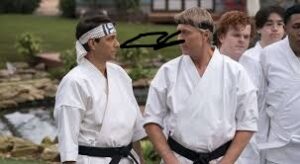Psycho-preparation is an important part of the competitive training since it enables competitors to find out ways of handling performance pressure. In the use of a kata or as when designing a sparring pattern, visualization is a highly beneficial process where the practitioner imagines the moves and counters to be used. Visualization can help the competitors to feel familiar with the opponent’s actions, thus the feeling of control about a situation is achieved.
Stress reducing practices and mindfulness include praying, meditating and other forms of breathing exercises that enable a person to remain composed. These techniques help to improve the condition of the mind and reduce aggressive actions, aggressive thoughts and aggressive impulses of competitors.
How to Get Started with Karate
Finding a Dojo
What to Look For
Choosing the right dojo is important if the person considering karate training is to have a good experience training in karate. The following points are important if you have to choose a specific dojo that will meet your requirements and objectives.
- Instructor Credentials: Make sure the dojo is run by qualified and experienced martial arts trainers. For this reason, ensure to check their certifications, training background and teaching experience. Accurate advice, safe learning and steady advancement can be given by a good teacher or trainer.
- Dojo Atmosphere: Go to the dojo and see how it is like to train. Friendliness and approachability are important conditions for a student and a person in general. Learn how instructors communicate and how students respond to each other and their teachers. The ideal relational culture prominent at a dojo include courtesy and friendly relations in the dojo.
- Class Structure: Assess the nature of the classes in terms of their structure together with the content. An ideal class should comprise of equal proportions of kihon, kata and kumite. Also, the classes should be classified depending on the skills offered so that the trainers organize the training in groups and offer classes for a beginner, intermediate, and advanced level.
- Facility and Equipment: Housing and Equipment: The dojo should be clean, well maintained and stocked with all the necessary equipment including mats, punching bags and protective gears among others. Injuries must be avoided during training, and training environmental conditions must promote practice.
- Class Schedule: Check the dojo’s schedule of classes to see whether they fit in the time when you are most available. Regular practice is essential for improvement, so select a dojo with training sessions that work for you.
- Student Feedback: Interview current students in order to supplement their proven opinions. Receiving positive feedbacks and recommendations from the clients could help the researcher identify the kind of dojo needed and the kind of instruction given to the clients.

Trial Classes and Evaluations
A number of dojos have a trial lesson or a taste of what it is to be a learner session for those interested. It is only possible to fully understand what kind of teaching style and training the dojo has in practice by seizing these opportunities.
- Trial Class: Take a trial class to find how the dojo operates and trains its members. The specific things to assess are the manner in which the instructor is handling the class, the general organization of the training session and the interaction level. A trial class is quite effective in enabling you know whether or not the dojo is appropriate for you.
- Evaluation Session: Some dojos offer what is called the test and review session where the sensei will evaluate the student’s current skill set and advise. You may be able to find out what areas you require most attention and discuss your training objectives during these sessions.
- Ask Questions: It is always a good idea when you attend a trial class or an evaluation session to inquire to the instructor about the general training concepts of the dojo, as well as the organization and conduct of classes and your expectations. You can talk it out with the instructor and make a better decision for yourself.